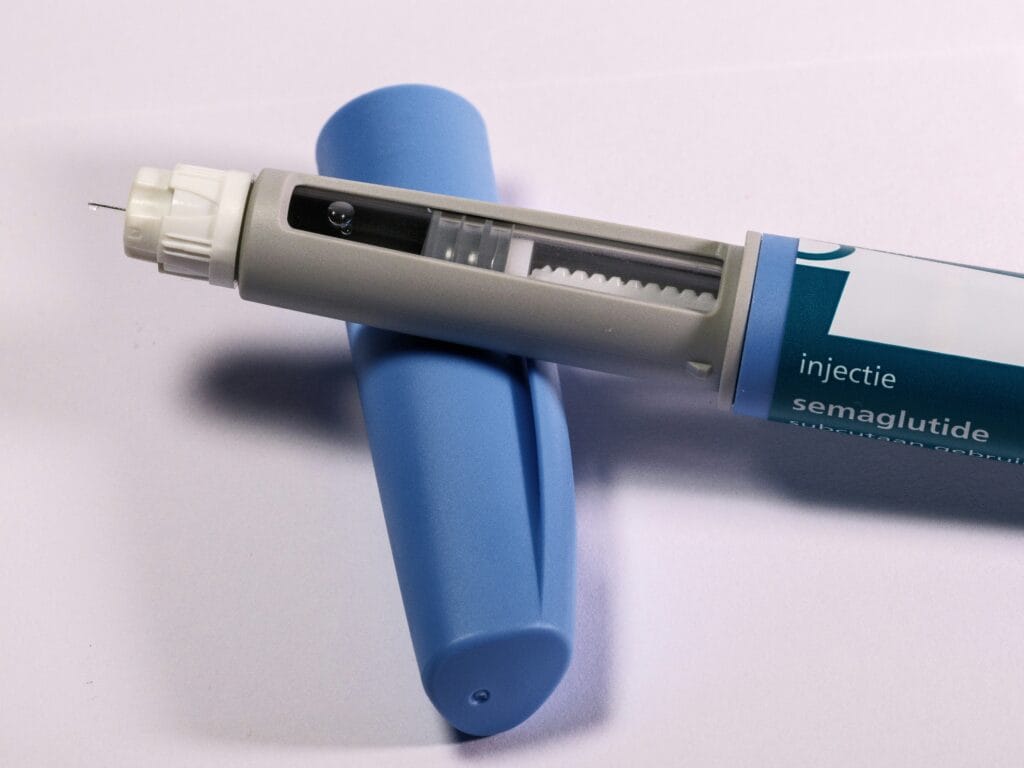When I was a teenager, the beauty standard was heroin chic — hollow cheeks, jutting bones, and that washed-out fragility so many young girls internalised as “aspirational.” It was toxic then, and we all assumed we’d moved past it.
Fast-forward thirty years, and here we are again. Different decade, different method — this time it’s not crash diets or cigarettes, but GLP-1 weight-loss injections. The packaging is medical, the language is scientific, yet the result often looks eerily familiar: women shrinking beyond recognition, faces drawn, bodies frail, energy gone.

🧬 What GLP-1s actually do
Drugs such as semaglutide and tirzepatide were designed for people with type 2 diabetes, where they can be life-changing. They mimic a hormone that tells the brain “you’re full,” slow digestion, and regulate blood sugar. For non-diabetic users, they work mainly by switching off appetite. Food simply stops appealing — and weight drops, often rapidly.
When weight falls that fast, the body doesn’t just burn fat. It breaks down muscle, connective tissue, and bone density too. Many doctors are now seeing patients who’ve lost 20–30 per cent of their body weight but feel weak, look gaunt, and age visibly in months.
⚖️ The hidden cost of rapid loss
Losing muscle means your metabolism slows down, your posture changes, and even your face loses structure. Externally, it shows up as that unmistakable “Ozempic face” — hollowed temples, sagging skin, tired eyes. Internally, the consequences may be more serious: poorer circulation, slower healing, hormonal imbalance, and potential bone thinning.
The scary part? We don’t yet know the full long-term impact of these drugs on otherwise healthy bodies. Trials in diabetics show benefits, but for people already metabolically well, it’s largely uncharted territory.
💔 Why it feels like déjà vu
It’s heart-breaking to watch history repeat itself under a new name. Social media glamorises “effortless thinness,” and women are once again applauded for taking up less space — only now it’s doctor-approved.
We were supposed to have learned that health isn’t a dress size. We know better about nutrition, strength, and female physiology — yet the pressure to be smaller never really left; it just evolved.
Seeing friends, school mums and influencers shrinking into frail versions of themselves feels unsettling. If it’s aging faces so visibly on the outside, what is it doing on the inside?
💪 Building our “old lady bodies”
For women in midlife, this is the exact opposite of what we should be striving for. These are the years to build our old lady bodies — to lift weights, protect our bone density, support our hormones, and strengthen the muscles that will carry us through the decades ahead.
We don’t need to be shrinking ourselves back to pre-pubescent proportions; we need to be fuelling ourselves to last. Strong, stable bodies age better, recover faster, and support mental health too. Midlife isn’t about disappearing — it’s about investing in the physical foundation that will serve us in later life.

👧 What message are we sending our children?
Perhaps the most worrying part of this new “skinny renaissance” is what it teaches the next generation. Our children are watching. They see the meals skipped, the needles glamorised, the praise for shrinking women, and the quiet horror of natural bodies labelled as “before pictures.”
If we’re telling our daughters — or our sons — that the pinnacle of self-care is self-erasure, what hope do they have for a healthy relationship with food, movement, and their own reflection?
We wanted them to grow up in a world that valued strength, balance, and individuality — not one where thinness is rebranded as wellness.
🗣️ The language we use matters
Listen to the way people greet each other. It’s almost always, “Oh my god, you look amazing!” — which, let’s be honest, often really means, “You look tiny.” We rarely hear, “Wow, your quads look strong,” or “Your biceps are so defined,” even though those are the signs of genuine strength and consistency.
Why? Because building muscle, stability, and resilience takes time, patience, and effort — and we live in a world obsessed with instant gratification. Quick fixes are rewarded, and hard work is quietly ignored. If we want a different future for ourselves — and our children — we have to start celebrating the slow, steady kind of progress that actually keeps us healthy.
We can do better. We have to do better.

🧠 The conversation we need
GLP-1s absolutely have a place in medicine. They’re revolutionary for people managing diabetes or severe obesity, but they’re not a lifestyle accessory, and certainly not a sustainable path to “wellness.”
We need a cultural reset — one that celebrates strong over small, energy over emptiness, and function over form. Real health isn’t about silencing hunger; it’s about feeding ourselves — body, mind, and soul — in ways that help us thrive for years to come.
If we can start modelling that now, maybe our children won’t have to spend their adulthood unlearning it all over again.

